▼ SAARCLAW conference begins in Sri Lanka [10-30-17]
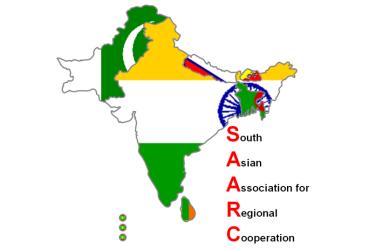 South Asia's top Judges, legal practitioners, academics and all those interested in the development of law in the region gathered in Colombo, Sri Lanka on 27th Oct to discuss emerging legal trends in the South Asian countries.
The 14th South Asian Association for Regional Co-operation in Law (SAARCLAW) Conference will be held from October 27 (today) to 29 along with the 11th SAARC Chief Justices Conference.
According to Mehmood Mandviwalla, President of SAARCLAW the conference will deal with issues like artificial intelligence, human trafficking, FDIs and environmental protection concerns.
The conference coincides with the 25th anniversary of SAARCLAW, which was established in Sri Lanka in 1991. Spanning over 25 years the conference provides a platform for legal professionals from the South Asian region to meet and discuss issues of mutual interests pertaining to justice, legal reforms, good governance and enforcement.
The conference will be inaugurated on Friday October 27 and the keynote address will be delivered by Sri Lankan Prime Minister Ranil Wickremesinghe.
This 3-day event under the theme "Emerging Legal Trends in SAARC Countries" will focus on current issues in a diverse range of areas.
The conference is accentuated with opportunities to meet and reconnect with members of the legal community for networking.
The 11th Chief Justices conference will be held on October 28. This is a closed-door session that will be attended only by Their Lordships, the Chief Justices of the SAARC countries. South Asia's top Judges, legal practitioners, academics and all those interested in the development of law in the region gathered in Colombo, Sri Lanka on 27th Oct to discuss emerging legal trends in the South Asian countries.
The 14th South Asian Association for Regional Co-operation in Law (SAARCLAW) Conference will be held from October 27 (today) to 29 along with the 11th SAARC Chief Justices Conference.
According to Mehmood Mandviwalla, President of SAARCLAW the conference will deal with issues like artificial intelligence, human trafficking, FDIs and environmental protection concerns.
The conference coincides with the 25th anniversary of SAARCLAW, which was established in Sri Lanka in 1991. Spanning over 25 years the conference provides a platform for legal professionals from the South Asian region to meet and discuss issues of mutual interests pertaining to justice, legal reforms, good governance and enforcement.
The conference will be inaugurated on Friday October 27 and the keynote address will be delivered by Sri Lankan Prime Minister Ranil Wickremesinghe.
This 3-day event under the theme "Emerging Legal Trends in SAARC Countries" will focus on current issues in a diverse range of areas.
The conference is accentuated with opportunities to meet and reconnect with members of the legal community for networking.
The 11th Chief Justices conference will be held on October 28. This is a closed-door session that will be attended only by Their Lordships, the Chief Justices of the SAARC countries.
|
▼ OPV Vikram: India's first privately built defence craft [10-30-17]
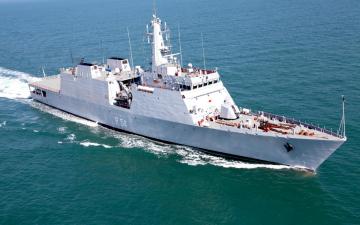 The vessel, equipped with modern weapon and state-of- the-art radar systems, would be deployed for day and night surveillance patrol, search, rescue and in pollution response operations.
The offshore patrol vessel (OPV), entirely developed in-house by Larsen and Toubro and the country's first-ever such defence craft to be built in a private shipyard was handed over to the coast guard.
The vessel named "Vikram", built at Larsen and Toubro's Kattupalli shipyard, about 45 km from here, was handed over to the Coast Guard ahead of the March 2018 delivery schedule.
This is the first of the seven vessels for which the INR 1,432-crore contract had been awarded by the Ministry of Defence in March 2015.
As per the contract, the first vessel was slated to be delivered in March next year.
The vessel, equipped with modern weapon and state-of- the-art radar systems, would be deployed for day and night surveillance patrol, search and rescue and in pollution response operations in exclusive economic zones of the country, the Coast Guard said in a release.
The OPV is designed entirely in-house and became the first defence vessel to be built in a private shipyard.
The ship is indigenously designed and would be inducted into service by April 2018 after completion of extensive trials of equipment and machineries.
The ship is fitted with one 30 mm automatic gun and two 12.7 mm gun with fire control systems. It would have integral twin-engine helicopter, which would enhance its operational, surveillance, search and rescue capabilities.
The vessel is equipped with state-of-the-art radars, navigation and communication systems capable of operating in tropical conditions.
Till date, Larsen and Toubro had delivered six refit defence ships including the largest logistics tanker ship INS Jyoti from the shipyard.
The OPV launched today is 97 metres long, 15 metre wide and has 2,140T displacement with a range of 5,000 nautical miles and can reach speed of up to 26 knots.
The entire design and construction processes have undergone dual certification from American Bureau of Shipping and Indian Registrar of Shipping. The vessel, equipped with modern weapon and state-of- the-art radar systems, would be deployed for day and night surveillance patrol, search, rescue and in pollution response operations.
The offshore patrol vessel (OPV), entirely developed in-house by Larsen and Toubro and the country's first-ever such defence craft to be built in a private shipyard was handed over to the coast guard.
The vessel named "Vikram", built at Larsen and Toubro's Kattupalli shipyard, about 45 km from here, was handed over to the Coast Guard ahead of the March 2018 delivery schedule.
This is the first of the seven vessels for which the INR 1,432-crore contract had been awarded by the Ministry of Defence in March 2015.
As per the contract, the first vessel was slated to be delivered in March next year.
The vessel, equipped with modern weapon and state-of- the-art radar systems, would be deployed for day and night surveillance patrol, search and rescue and in pollution response operations in exclusive economic zones of the country, the Coast Guard said in a release.
The OPV is designed entirely in-house and became the first defence vessel to be built in a private shipyard.
The ship is indigenously designed and would be inducted into service by April 2018 after completion of extensive trials of equipment and machineries.
The ship is fitted with one 30 mm automatic gun and two 12.7 mm gun with fire control systems. It would have integral twin-engine helicopter, which would enhance its operational, surveillance, search and rescue capabilities.
The vessel is equipped with state-of-the-art radars, navigation and communication systems capable of operating in tropical conditions.
Till date, Larsen and Toubro had delivered six refit defence ships including the largest logistics tanker ship INS Jyoti from the shipyard.
The OPV launched today is 97 metres long, 15 metre wide and has 2,140T displacement with a range of 5,000 nautical miles and can reach speed of up to 26 knots.
The entire design and construction processes have undergone dual certification from American Bureau of Shipping and Indian Registrar of Shipping.
|
▼ What is Gulf War Illness? [10-27-17]
 Scientific research published last month in the journal PLOS One has indicated that mitochondrial DNA (mtDNA) of war veterans might be damaged by their experience.
The study, which focused on mtDNA, included 21 veterans with Gulf War illness (GWI) and seven controls, website Science Daily reported.
Gulf War Illness (GWI) refers to a condition that for long remained medically unexplained and afflicted veterans of the Gulf War.
This includes chronic fatigue, headaches, joint pain, indigestion and problems of memory or breathing and lack of sleep.
The mtDNA damage is a natural part of ageing and exposure to air pollution.
However, it was 20 per cent higher in the veteran group, compared with a control group that included three veterans without GWI and four non-veterans.
Greater mtDNA damage is consistent with mitochondrial dysfunction, which may contribute to symptoms of GWI, as well as persistence of this illness over time, and mitochondrial dysfunction is involved in the pathobiology of GWI.
Researchers used a new technique that allowed them to evaluate the quality of mitochondrial DNA directly from total DNA without having to isolate the mitochondria.
This approach was simpler and did not require analysis through a biopsy of a piece of tissue, such as skeletal muscle.
Mitochondria Scientific research published last month in the journal PLOS One has indicated that mitochondrial DNA (mtDNA) of war veterans might be damaged by their experience.
The study, which focused on mtDNA, included 21 veterans with Gulf War illness (GWI) and seven controls, website Science Daily reported.
Gulf War Illness (GWI) refers to a condition that for long remained medically unexplained and afflicted veterans of the Gulf War.
This includes chronic fatigue, headaches, joint pain, indigestion and problems of memory or breathing and lack of sleep.
The mtDNA damage is a natural part of ageing and exposure to air pollution.
However, it was 20 per cent higher in the veteran group, compared with a control group that included three veterans without GWI and four non-veterans.
Greater mtDNA damage is consistent with mitochondrial dysfunction, which may contribute to symptoms of GWI, as well as persistence of this illness over time, and mitochondrial dysfunction is involved in the pathobiology of GWI.
Researchers used a new technique that allowed them to evaluate the quality of mitochondrial DNA directly from total DNA without having to isolate the mitochondria.
This approach was simpler and did not require analysis through a biopsy of a piece of tissue, such as skeletal muscle.
Mitochondria
- Mitochondria are organs that act as spark plugs within cells.
- They are like a digestive system that takes in nutrients, breaks them down, and creates energy-rich molecules for the cell. They are very sensitive to potential damage caused by toxins.
- People with mitochondrial dysfunction show symptoms involving multiple organ systems, primarily nerves and muscles.
|
▼ Mumbai gears up for second Ahimsa festival [10-27-17]
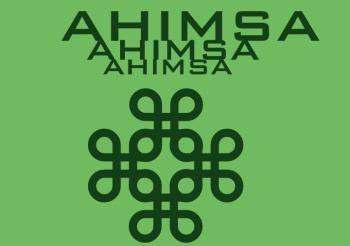 Mumbai is set to host the second Ahimsa festival that seeks to spread a cruelty free lifestyle.
Participating it the 18 day festival are Dr Will Tuttle, author of the 'World Peace Diet' and Kuntal Joisher, India's very own vegan mountaineer who climbed Mount Everest, among many others.
From interacting with doctors and health consultants on reversing disease by choosing whole foods and plant based diets to cooking without the use of animal ingredients, the festival has about 100 odd events lined up for anyone to participate in.
The organisers are Ahimsa Parmo Dharma Group.
The event will also screen 'What The Health', 'Okja', 'Cowspiracy' and 'Forks over Knives', among other films.
The aim is to spread the word on compassionate living that "involves not just caring for our own health but also that of our fellow animal beings and to go beyond that to care for our planet as well", the note said.
The event is on from October 26th to November 12th. Mumbai is set to host the second Ahimsa festival that seeks to spread a cruelty free lifestyle.
Participating it the 18 day festival are Dr Will Tuttle, author of the 'World Peace Diet' and Kuntal Joisher, India's very own vegan mountaineer who climbed Mount Everest, among many others.
From interacting with doctors and health consultants on reversing disease by choosing whole foods and plant based diets to cooking without the use of animal ingredients, the festival has about 100 odd events lined up for anyone to participate in.
The organisers are Ahimsa Parmo Dharma Group.
The event will also screen 'What The Health', 'Okja', 'Cowspiracy' and 'Forks over Knives', among other films.
The aim is to spread the word on compassionate living that "involves not just caring for our own health but also that of our fellow animal beings and to go beyond that to care for our planet as well", the note said.
The event is on from October 26th to November 12th.
|
▼ US tightens norms for H-1B visa holders [10-26-17]
 Fresh changes in rules notified by the U.S. Citizenship and Immigration Services (USCIS) for renewal of non-immigrant visas will severely impact H-1B visa holders.
Petitions for renewal of H-1B visas, particularly when the underlying facts that supported the original petition have not changed, are currently considered with a presumption of approval, but that will no longer be the case.
Consequently, the burden of proof will be on the petitioner to substantiate his application even when nothing has changed since the previous petition.
The new rules are in line with the Donald Trump administration’s Buy American, Hire American policy, USCIS said.
Increasing restrictions on H-1B visa programme remains a point of concern in the India-US relations, as a majority of these guest workers are Indians.
The new changes were announced even as a comprehensive review the H-1B programme is underway.
The new rules will impact all changes sought by H-1B visa holders.
Primarily, an H-1B worker goes to the USCIS for three types of changes to his status - amendment, transfer and renewal
Amendments are sought when an H-1B employee changes the location within the same company; transfer is sought when he moves from one company to another, and a renewal is sought at the expiry of the visa.
The latter is usually issued for three years at the beginning. "…adjudicators must thoroughly review the petition and supporting evidence to determine eligibility for the benefit sought," the USCIS has said.
The previous policy - which has been in force for 13 years - instructed officers to give deference to the findings of a previously approved petition, as long as the key elements were unchanged and there was no evidence of a material error or fraud related to the prior determination.
The updated policy guidance rescinds the previous policy. Fresh changes in rules notified by the U.S. Citizenship and Immigration Services (USCIS) for renewal of non-immigrant visas will severely impact H-1B visa holders.
Petitions for renewal of H-1B visas, particularly when the underlying facts that supported the original petition have not changed, are currently considered with a presumption of approval, but that will no longer be the case.
Consequently, the burden of proof will be on the petitioner to substantiate his application even when nothing has changed since the previous petition.
The new rules are in line with the Donald Trump administration’s Buy American, Hire American policy, USCIS said.
Increasing restrictions on H-1B visa programme remains a point of concern in the India-US relations, as a majority of these guest workers are Indians.
The new changes were announced even as a comprehensive review the H-1B programme is underway.
The new rules will impact all changes sought by H-1B visa holders.
Primarily, an H-1B worker goes to the USCIS for three types of changes to his status - amendment, transfer and renewal
Amendments are sought when an H-1B employee changes the location within the same company; transfer is sought when he moves from one company to another, and a renewal is sought at the expiry of the visa.
The latter is usually issued for three years at the beginning. "…adjudicators must thoroughly review the petition and supporting evidence to determine eligibility for the benefit sought," the USCIS has said.
The previous policy - which has been in force for 13 years - instructed officers to give deference to the findings of a previously approved petition, as long as the key elements were unchanged and there was no evidence of a material error or fraud related to the prior determination.
The updated policy guidance rescinds the previous policy.
|
▼ AYUSH Ministry launches first BIMSTEC Task Force on Traditional Medicine [10-26-17]
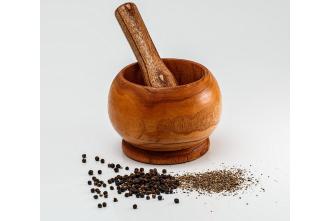 Ministry of AYUSH, Government of India hosted First Meeting of BIMSTEC Task Force on Traditional Medicine on 24-25 October, 2017 at Parvasi Bhartiya Kendra, New Delhi.
The Bay of Bengal Initiative for Multi-Sectoral Technical and Economic Cooperation (BIMSTEC) is an International Organisation involving a group of countries in the South Asia and South East Asia namely, Bangladesh, India, Myanmar, Sri Lanka, Thailand, Bhutan and Nepal.
India being a major stake holder in the field of Traditional Medicine plays an important role in influencing the policies and strategies related to the Traditional Medicine in the BIMSTEC Forum
Delegations from the People’s Republic of Bangladesh, the Kingdom of Bhutan, the Republic of India, and the Republic of the Union of Myanmar, the Federal Democratic Republic of Nepal, the Democratic Socialist Republic of Sri Lanka and the Kingdom of Thailand along with the BIMSTEC Secretariat participated in the Meeting, which covered:
(a) Implementation of Strategies of BIMSTEC Task Force on Traditional Medicines (BITFM)
(b) Priority Areas for technical and research collaboration among the Member States on Traditional Medicine
(c) Regional strategy on the protection of Genetic Resource associated with Traditional Medicine Knowledge and Intellectual Property Rights and develop a work plan
(d) Human Resource Development and Capacity Building among the BIMSTEC Member States
(e) New Initiative, proposals and programmes for cooperation on Traditional Medicine among the BIMSTEC Task Force on Traditional Medicine.
In accordance with the ToR of the Task Force, the BTFTM Meetings shall be held on rotational basis among the BIMSTEC Member States..
The Meeting considered and adopted the draft Report of the First Meeting of the Task Force for submission to the Fourth Meeting of the BNNCCTM to be held in Bangladesh.
The Meeting conveyed its deep appreciation to the Government of the Republic of India for the warm hospitality extended to the participants and for the excellent arrangement made for the Meeting. Ministry of AYUSH, Government of India hosted First Meeting of BIMSTEC Task Force on Traditional Medicine on 24-25 October, 2017 at Parvasi Bhartiya Kendra, New Delhi.
The Bay of Bengal Initiative for Multi-Sectoral Technical and Economic Cooperation (BIMSTEC) is an International Organisation involving a group of countries in the South Asia and South East Asia namely, Bangladesh, India, Myanmar, Sri Lanka, Thailand, Bhutan and Nepal.
India being a major stake holder in the field of Traditional Medicine plays an important role in influencing the policies and strategies related to the Traditional Medicine in the BIMSTEC Forum
Delegations from the People’s Republic of Bangladesh, the Kingdom of Bhutan, the Republic of India, and the Republic of the Union of Myanmar, the Federal Democratic Republic of Nepal, the Democratic Socialist Republic of Sri Lanka and the Kingdom of Thailand along with the BIMSTEC Secretariat participated in the Meeting, which covered:
(a) Implementation of Strategies of BIMSTEC Task Force on Traditional Medicines (BITFM)
(b) Priority Areas for technical and research collaboration among the Member States on Traditional Medicine
(c) Regional strategy on the protection of Genetic Resource associated with Traditional Medicine Knowledge and Intellectual Property Rights and develop a work plan
(d) Human Resource Development and Capacity Building among the BIMSTEC Member States
(e) New Initiative, proposals and programmes for cooperation on Traditional Medicine among the BIMSTEC Task Force on Traditional Medicine.
In accordance with the ToR of the Task Force, the BTFTM Meetings shall be held on rotational basis among the BIMSTEC Member States..
The Meeting considered and adopted the draft Report of the First Meeting of the Task Force for submission to the Fourth Meeting of the BNNCCTM to be held in Bangladesh.
The Meeting conveyed its deep appreciation to the Government of the Republic of India for the warm hospitality extended to the participants and for the excellent arrangement made for the Meeting.
|
▼ First Pradhan Mantri Kaushal Kendra for skilling smart cities [10-24-17]
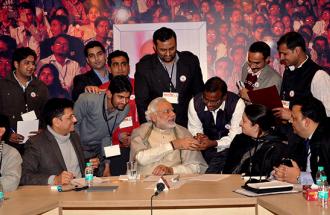 To bring momentum in skilling through collaborative efforts, the Union Home Minister Shri Rajnath Singh along with Minister of Petroleum and Natural Gas and Skill Development and Entrepreneurship Shri Dharmendra Pradhan inaugurated India's first Pradhan Mantri Kaushal Kendra (PMKK) for Skilling in Smart Cities.
This is in collaboration with New Delhi Municipal Council (NDMC)
Affirming synergies with the Government of India's flagship programs, the new skill development centres underscore the commitment of the Ministry of Urban Affairs & Housing (MUHA) and the Ministry of Skill Development & Entrepreneurship (MSDE) to support skilling in smart cities.
National Skill Development Corporation (NSDC), an executive arm of MSDE, has collaborated with New Delhi Municipal Council Smart City Limited (NDMCSCL) to extend cooperation for setting up of PMKK Centres for Smart Cities, to provide skill training for unemployed youth through its short-term training (STT) module and contribute to the capacity building of municipal employees through Recognition of Prior Learning (RPL) program.
India which has the privilege of being a young nation, would gain from this demographic dividend to become a superpower and be amongst the top three counties in the world by 2030.
The key to reach this milestone is by investing in our youth and making them skilled.
This initiative is for integration and convergence approach towards the Prime Minister's two most ambitious projects-the Skill India Mission and the Smart City Mission.
Skilled workforce is required for effective development of any big or small project.
Pradhan Mantri Kaushal Kendra To bring momentum in skilling through collaborative efforts, the Union Home Minister Shri Rajnath Singh along with Minister of Petroleum and Natural Gas and Skill Development and Entrepreneurship Shri Dharmendra Pradhan inaugurated India's first Pradhan Mantri Kaushal Kendra (PMKK) for Skilling in Smart Cities.
This is in collaboration with New Delhi Municipal Council (NDMC)
Affirming synergies with the Government of India's flagship programs, the new skill development centres underscore the commitment of the Ministry of Urban Affairs & Housing (MUHA) and the Ministry of Skill Development & Entrepreneurship (MSDE) to support skilling in smart cities.
National Skill Development Corporation (NSDC), an executive arm of MSDE, has collaborated with New Delhi Municipal Council Smart City Limited (NDMCSCL) to extend cooperation for setting up of PMKK Centres for Smart Cities, to provide skill training for unemployed youth through its short-term training (STT) module and contribute to the capacity building of municipal employees through Recognition of Prior Learning (RPL) program.
India which has the privilege of being a young nation, would gain from this demographic dividend to become a superpower and be amongst the top three counties in the world by 2030.
The key to reach this milestone is by investing in our youth and making them skilled.
This initiative is for integration and convergence approach towards the Prime Minister's two most ambitious projects-the Skill India Mission and the Smart City Mission.
Skilled workforce is required for effective development of any big or small project.
Pradhan Mantri Kaushal Kendra
- The newly inaugurated Pradhan Mantri Kaushal Kendra leverages NDMC infrastructure for skilling initiatives.
- Located at Mandir Marg, New Delhi, the NDMC-PMKK Centre for Skilling in Smart Cities is an exemplary heritage building of approx. 30,000 sq. ft., with a capacity of skilling 4,000 youth annually. Catering to healthcare and solar energy sectors, the centre will be managed by one of NSDC's affiliated training partners-Orion Edutech.
- This is a company which has an impeccable record of training nearly 3 lakh candidates through its network of over 275 skill development centres across the country.
- On this occasion, a solar-power lab powered by Schneider Electric was also inaugurated.
|
▼ Gujarat's first ro-ro ferry service inaugurated [10-23-17]
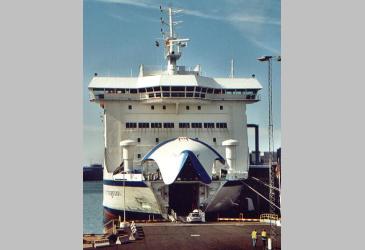 Prime Minister Narendra Modi's third visit to his home state Gujarat this month saw the announcement of projects worth INR 2000 crore.
The state also had its first "roll-on, roll-off (Ro-Ro)" ferry service-an INR 650-crore initiative which the Prime Minister inaugurated calling it his "dream project" connecting Ghogha and Dahej.
The ro-ro ferry will ply the Gulf of Khambhat between peninsular Saurashtra and South Gujarat. Ghogha situated in Bhavnagar district of Saurashtra lies 17 nautical miles (32 km), across the gulf from Dahej in Bharuch district.
A first of its kind in India, the ferry will be able to carry up to 100 vehicles (cars, buses and trucks) and 250 passengers between the two ports.
The ro-ro ferry services are vessels made to carry wheeled cargo that are driven on and off the ferry on their own wheels or using a platform vehicle. The wheeled cargo includes, cars, trucks, semi-trailer trucks, trailers, and railroad cars.
The term ro-ro is generally reserved for large ocean-going vessels.
The vessels have either built-in or shore-based ramps that allow the cargo to be efficiently rolled on and off the vessel when in port.
This is in opposite to the lift-on and lift-off (lo-lo) vessels, which use a crane to load and unload cargo.
The central government has allocated Rs 117 crore for dredging work at both Ghogha and Dahej under the Sagarmala initiative.
The Gujarat government body in charge of marine and ports affairs along the state's 1,600 km coastline, floated tenders for the project in 2011.
The service shall reduce the travel time between Ghogha in Saurashtra, and Dahej in South Gujarat, from about seven or eight hours, to just over an hour.
The distance between the two places would be reduced to 31 km from the current distance of 360 km. When fully operationalised, it will also enable movement of vehicles.
The ferry service is aimed at boosting the connectivity and infrastructure in Gujarat. Prime Minister Narendra Modi's third visit to his home state Gujarat this month saw the announcement of projects worth INR 2000 crore.
The state also had its first "roll-on, roll-off (Ro-Ro)" ferry service-an INR 650-crore initiative which the Prime Minister inaugurated calling it his "dream project" connecting Ghogha and Dahej.
The ro-ro ferry will ply the Gulf of Khambhat between peninsular Saurashtra and South Gujarat. Ghogha situated in Bhavnagar district of Saurashtra lies 17 nautical miles (32 km), across the gulf from Dahej in Bharuch district.
A first of its kind in India, the ferry will be able to carry up to 100 vehicles (cars, buses and trucks) and 250 passengers between the two ports.
The ro-ro ferry services are vessels made to carry wheeled cargo that are driven on and off the ferry on their own wheels or using a platform vehicle. The wheeled cargo includes, cars, trucks, semi-trailer trucks, trailers, and railroad cars.
The term ro-ro is generally reserved for large ocean-going vessels.
The vessels have either built-in or shore-based ramps that allow the cargo to be efficiently rolled on and off the vessel when in port.
This is in opposite to the lift-on and lift-off (lo-lo) vessels, which use a crane to load and unload cargo.
The central government has allocated Rs 117 crore for dredging work at both Ghogha and Dahej under the Sagarmala initiative.
The Gujarat government body in charge of marine and ports affairs along the state's 1,600 km coastline, floated tenders for the project in 2011.
The service shall reduce the travel time between Ghogha in Saurashtra, and Dahej in South Gujarat, from about seven or eight hours, to just over an hour.
The distance between the two places would be reduced to 31 km from the current distance of 360 km. When fully operationalised, it will also enable movement of vehicles.
The ferry service is aimed at boosting the connectivity and infrastructure in Gujarat.
|
▼ Decorated Arms and Armours exhibition on display [10-23-17]
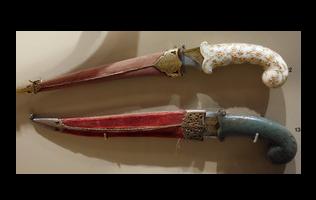 An exhibitions entitled "Decorated Arms & Armours" displaying select daggers, swords, armours as well as pistols from National Museum's reserve collection, which represents different time period, region, technique and customs associated with these beautiful masterpieces began on Oct 18, 2017.
Director General, National Museum Dr. B.R. Mani inaugurated it. The exhibition will be on displayed till 5th November, 2017.
The history of Indian arms and armours begins in pre and proto historic times, however in the historical context they are testified by several sculptures, painting and coins during the medieval period, there was considerable ingenuity and craftsmanship in manufacturing them.
During the Sultanate and the Mughal rule, weapons underwent significant modifications, and weapons with Persian, Arab and Turkish influences became common.
Examples are the Shamsheer from Persia and the Zulfikar from Arabia.
A variety of daggers, imported weapons for self protection and hand to hand combat were also in vogue.
There were regional variants like the Jamadhar, Jambia and Khanjar of Mughal the Chura of Afghans, the Khapwa of Rajputs, the Qurauli of Sikhs and the Khukri of Nepalis.
Many daggers were adorned with ivory, jade, crystal and soap stone and sometimes embellished with calligraphy.
From pre-historic period to the later Gupta period, we find that arms and armour were basically of a functional nature and do not bear much of an aesthetic element.
It was from the medieval period that arms and armour began to be profusely ornamented.
The ornamentation on weapons began to symbolize an individual's identity his political power and economic authority.
The study of ornamented arms and armour is interesting for the part they played in shaping our history and on the technical side, where arts were applied in various ways the ornamentation techniques, the metallurgy and utility of various materials.
These include gold, silver, copper, brass, jade, crystal, agate, ivory, horn, mother of pearl, tortoise shell, wood, hide, precious and semi-precious stones etc.
The arms and armour of the nobility, military commanders and elite warriors were adorned with precious decoration especially for ceremonial use.
Weapons used by the Royal houses of different dynasties were usually embellished with decorative designs bearing testimony to the fact of historical personalities.
The edged weapons like swords, daggers, spears etc were extensively decorate3 with hunting scenes; and several other patterns.
Many of the arms also bore the name of their owners.
Arms, most importantly ornamented daggers were the most common gifts presented to distinguished individuals in recognition of their services.
A custom which was prevalent right from the ancient times is still practiced in many parts of India. The arms and armours which made up as gifts were opulently decorated.
The decoration constituted things from everyday life and were subjected to a symmetrical arrangement, with pommel itself shaped like the head of horse, figures of deities and parrot among others. An exhibitions entitled "Decorated Arms & Armours" displaying select daggers, swords, armours as well as pistols from National Museum's reserve collection, which represents different time period, region, technique and customs associated with these beautiful masterpieces began on Oct 18, 2017.
Director General, National Museum Dr. B.R. Mani inaugurated it. The exhibition will be on displayed till 5th November, 2017.
The history of Indian arms and armours begins in pre and proto historic times, however in the historical context they are testified by several sculptures, painting and coins during the medieval period, there was considerable ingenuity and craftsmanship in manufacturing them.
During the Sultanate and the Mughal rule, weapons underwent significant modifications, and weapons with Persian, Arab and Turkish influences became common.
Examples are the Shamsheer from Persia and the Zulfikar from Arabia.
A variety of daggers, imported weapons for self protection and hand to hand combat were also in vogue.
There were regional variants like the Jamadhar, Jambia and Khanjar of Mughal the Chura of Afghans, the Khapwa of Rajputs, the Qurauli of Sikhs and the Khukri of Nepalis.
Many daggers were adorned with ivory, jade, crystal and soap stone and sometimes embellished with calligraphy.
From pre-historic period to the later Gupta period, we find that arms and armour were basically of a functional nature and do not bear much of an aesthetic element.
It was from the medieval period that arms and armour began to be profusely ornamented.
The ornamentation on weapons began to symbolize an individual's identity his political power and economic authority.
The study of ornamented arms and armour is interesting for the part they played in shaping our history and on the technical side, where arts were applied in various ways the ornamentation techniques, the metallurgy and utility of various materials.
These include gold, silver, copper, brass, jade, crystal, agate, ivory, horn, mother of pearl, tortoise shell, wood, hide, precious and semi-precious stones etc.
The arms and armour of the nobility, military commanders and elite warriors were adorned with precious decoration especially for ceremonial use.
Weapons used by the Royal houses of different dynasties were usually embellished with decorative designs bearing testimony to the fact of historical personalities.
The edged weapons like swords, daggers, spears etc were extensively decorate3 with hunting scenes; and several other patterns.
Many of the arms also bore the name of their owners.
Arms, most importantly ornamented daggers were the most common gifts presented to distinguished individuals in recognition of their services.
A custom which was prevalent right from the ancient times is still practiced in many parts of India. The arms and armours which made up as gifts were opulently decorated.
The decoration constituted things from everyday life and were subjected to a symmetrical arrangement, with pommel itself shaped like the head of horse, figures of deities and parrot among others.
|
▼ Logo and Tagline Contest for GIs of India [10-23-17]
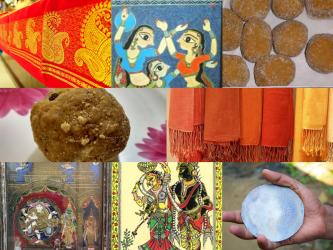 The Cell for IPR Promotions & Management (CIPAM) under the aegis of the Department of Industrial Policy Promotion (DIPP), Ministry of Commerce and Industry, has launched a logo and tagline/slogan contest for Geographical Indications (GIs) of India on MyGov.in website.
A Geographical Indication (GI) is primarily an agricultural, natural or a manufactured product (handicrafts and industrial goods) originating from a definite geographical territory. Typically, such a name conveys an assurance of quality and distinctiveness, which is essentially attributable to the place of its origin.
Some of the examples of registered Indian GIs are Darjeeling Tea, Tirupathi Laddu, Kangra Paintings, Nagpur Orange, Kashmir Pashmina etc.
GIs are not only part of our rich culture and collective intellectual heritage, but they also supplement the incomes of our rural farmers, weavers, artisans and craftsmen across the country.
The promotion of GIs is in line with the Government of India's 'Make in India' campaign and therefore, it is our responsibility to preserve and protect them.
Taking forward its ongoing social media campaign #LetsTalkIP to promote Indian GIs, DIPP aims to launch a certifying GI mark/logo that can be used to identify all registered GIs irrespective of the categories, and a suitable tagline/slogan for promotion of GIs.
This will also help in engaging more people on the subject of GIs and making them aware about the benefits of a GI tag.
DIPP has taken several initiatives for promoting awareness and outreach on GIs. One of the ways to promote GIs could be to present them as gifts.
In this context, CIPAM has also launched "Gift a GI" campaign to enhance the visibility and thus help in branding and promotion of registered GI products. DIPP is also working with State governments to spread awareness on GIs. The Cell for IPR Promotions & Management (CIPAM) under the aegis of the Department of Industrial Policy Promotion (DIPP), Ministry of Commerce and Industry, has launched a logo and tagline/slogan contest for Geographical Indications (GIs) of India on MyGov.in website.
A Geographical Indication (GI) is primarily an agricultural, natural or a manufactured product (handicrafts and industrial goods) originating from a definite geographical territory. Typically, such a name conveys an assurance of quality and distinctiveness, which is essentially attributable to the place of its origin.
Some of the examples of registered Indian GIs are Darjeeling Tea, Tirupathi Laddu, Kangra Paintings, Nagpur Orange, Kashmir Pashmina etc.
GIs are not only part of our rich culture and collective intellectual heritage, but they also supplement the incomes of our rural farmers, weavers, artisans and craftsmen across the country.
The promotion of GIs is in line with the Government of India's 'Make in India' campaign and therefore, it is our responsibility to preserve and protect them.
Taking forward its ongoing social media campaign #LetsTalkIP to promote Indian GIs, DIPP aims to launch a certifying GI mark/logo that can be used to identify all registered GIs irrespective of the categories, and a suitable tagline/slogan for promotion of GIs.
This will also help in engaging more people on the subject of GIs and making them aware about the benefits of a GI tag.
DIPP has taken several initiatives for promoting awareness and outreach on GIs. One of the ways to promote GIs could be to present them as gifts.
In this context, CIPAM has also launched "Gift a GI" campaign to enhance the visibility and thus help in branding and promotion of registered GI products. DIPP is also working with State governments to spread awareness on GIs.
|
▼ World’s deepest lake, Lake Baikal, under threat [10-23-17]
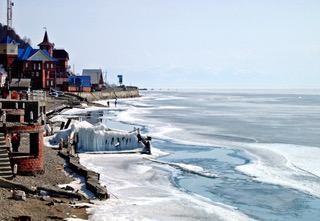 Lake Baikal is undergoing its gravest crisis in recent history, experts say, as the government bans the catching of a signature fish that has lived in the world’s deepest lake for centuries but is now under threat.
Holding one-fifth of the world’s unfrozen fresh water, Baikal in Russia’s Siberia is a natural wonder of exceptional value to evolutionary science meriting its listing as a World Heritage Site by UNESCO.
Baikal’s high biodiversity includes over 3,600 plant and animal species, most of which are endemic to the lake.
Over the past several years, however, the lake, a major international tourist attraction, has been crippled by a series of detrimental phenomena, some of which remain a mystery to scientists.
They include the disappearance of the omul fish, rapid growth of putrid algae and the death of endemic species of sponges across its vast 3.2 million-hectare (7.9 million-acre) area.
The total biomass of omul in Baikal has more than halved since 15 years ago from 25 million tonnes to just 10 million.
The decrease is likely caused by uncontrollable fish poaching, with extra pressure coming from the climate.
Baikal water stock is tied to climate.
Now there is a drought, rivers grow shallow, there are less nutrients. Baikal’s surface heats up and omul does not like warm water.
The Baikal omul, a well-known speciality, was for centuries the main local source of food, eaten salted or smoked, and especially important given the region has no farming.
Another peril to the lake’s ecosystem is the explosion of algal blooms unnatural to Baikal with thick mats of rotting Spirogyra algae blanketing pristine sandy beaches, which some scientists say indicates that the lake can no longer absorb human pollution without consequence.
The lake, which is 1,700 metres (5,580 feet) deep, and its tourism now provide a livelihood for many residents to replace fishing.
Foreign visitors often spend time at Baikal while doing a trip on the Trans-Siberian Railway and in recent years more Chinese have been coming as Russia eased visa requirements.
170 types of sponges throughout Baikal’s coast were tested and only 11 percent looked healthy.
A special 1999 law in Russia spells out protection measures for Lake Baikal.
The government is also putting 26 billion rubles (about $452 million, 385 million euros) into a cleanup programme, which started in 2012, to fund treatment facilities. Lake Baikal is undergoing its gravest crisis in recent history, experts say, as the government bans the catching of a signature fish that has lived in the world’s deepest lake for centuries but is now under threat.
Holding one-fifth of the world’s unfrozen fresh water, Baikal in Russia’s Siberia is a natural wonder of exceptional value to evolutionary science meriting its listing as a World Heritage Site by UNESCO.
Baikal’s high biodiversity includes over 3,600 plant and animal species, most of which are endemic to the lake.
Over the past several years, however, the lake, a major international tourist attraction, has been crippled by a series of detrimental phenomena, some of which remain a mystery to scientists.
They include the disappearance of the omul fish, rapid growth of putrid algae and the death of endemic species of sponges across its vast 3.2 million-hectare (7.9 million-acre) area.
The total biomass of omul in Baikal has more than halved since 15 years ago from 25 million tonnes to just 10 million.
The decrease is likely caused by uncontrollable fish poaching, with extra pressure coming from the climate.
Baikal water stock is tied to climate.
Now there is a drought, rivers grow shallow, there are less nutrients. Baikal’s surface heats up and omul does not like warm water.
The Baikal omul, a well-known speciality, was for centuries the main local source of food, eaten salted or smoked, and especially important given the region has no farming.
Another peril to the lake’s ecosystem is the explosion of algal blooms unnatural to Baikal with thick mats of rotting Spirogyra algae blanketing pristine sandy beaches, which some scientists say indicates that the lake can no longer absorb human pollution without consequence.
The lake, which is 1,700 metres (5,580 feet) deep, and its tourism now provide a livelihood for many residents to replace fishing.
Foreign visitors often spend time at Baikal while doing a trip on the Trans-Siberian Railway and in recent years more Chinese have been coming as Russia eased visa requirements.
170 types of sponges throughout Baikal’s coast were tested and only 11 percent looked healthy.
A special 1999 law in Russia spells out protection measures for Lake Baikal.
The government is also putting 26 billion rubles (about $452 million, 385 million euros) into a cleanup programme, which started in 2012, to fund treatment facilities.
|
▼ Meet INS Kiltan, India's third Kamorta ASW stealth corvette [10-17-17]
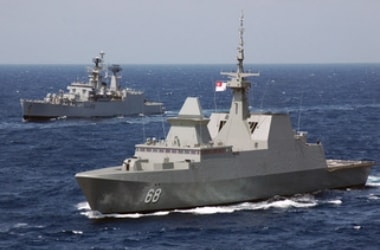 The country is rapidly marching towards indigenisation and the commissioning of the third Kamorta class Anti-Submarine Warfare (ASW) stealth corvette is a classic example of that.
On 16th Oct at the Eastern Naval Command the Raksha Mantri commissioned INS Kiltan, the third of the four Project-28 Kamorta class ASW.
This ship is unique, as about 81% is built indigenously and is the first built by India that has a superstructure made up of carbon fibre composite material.
This makes it a stealth corvette and makes India one among the few nations that have this technology or this class of ships.”
Builder’s Navy
The keel was laid in 2010 under the Project-28 scheme and was built by Garden Reach Ship Builders and Engineers (GRSE), Kolkata.
Indian Navy was moving from the status of a ‘buyer’s navy to builder’s navy.’
This is part of Prime Minister Narendra Modi’s ‘Make in India’ initiative and we need to become more self-reliant.
We have already gained the expertise in building hulls and we now need to focus on propulsion and weapon technology.
India had a long coastline with a vast EEZ (Exclusive Economic Zone) and there was a need to have a capable and potent navy.
The Indian Navy, she said, had been playing an important role in defending the borders as well as in peace and humanitarian missions.
The partnership between GRSE and the Indian Navy began in 1961 and so far it had built over 100 ships for the Navy and the Indian Coast Guard.
INS Kiltan: Know More The country is rapidly marching towards indigenisation and the commissioning of the third Kamorta class Anti-Submarine Warfare (ASW) stealth corvette is a classic example of that.
On 16th Oct at the Eastern Naval Command the Raksha Mantri commissioned INS Kiltan, the third of the four Project-28 Kamorta class ASW.
This ship is unique, as about 81% is built indigenously and is the first built by India that has a superstructure made up of carbon fibre composite material.
This makes it a stealth corvette and makes India one among the few nations that have this technology or this class of ships.”
Builder’s Navy
The keel was laid in 2010 under the Project-28 scheme and was built by Garden Reach Ship Builders and Engineers (GRSE), Kolkata.
Indian Navy was moving from the status of a ‘buyer’s navy to builder’s navy.’
This is part of Prime Minister Narendra Modi’s ‘Make in India’ initiative and we need to become more self-reliant.
We have already gained the expertise in building hulls and we now need to focus on propulsion and weapon technology.
India had a long coastline with a vast EEZ (Exclusive Economic Zone) and there was a need to have a capable and potent navy.
The Indian Navy, she said, had been playing an important role in defending the borders as well as in peace and humanitarian missions.
The partnership between GRSE and the Indian Navy began in 1961 and so far it had built over 100 ships for the Navy and the Indian Coast Guard.
INS Kiltan: Know More
- INS Kiltan has been constructed using high grade steel (DMR 249A) produced by the state-owned Steel Authority of India Limited (SAIL).
- It has a displacement of 3500 tonnes, spans 109 meters in length and 14 meters at the beam and is propelled by four diesel engines to achieve speeds in excess of 25 knots with an endurance of 3450 nautical miles.
- The carbon composite material gives it an extra stealth edge and also lowers the top weight and maintenance cost.
- The installed propulsion and auxiliary systems provides very low radiated underwater noise feature, required for anti-submarine warfare.
- The enhanced stealth features include ‘X’ form of Hull, full beam superstructure, inclined ship sides and use of Infra Red Signature Suppression (IRSS).
|
▼ FSSAI conclave sees launch of food fortification report [10-17-17]
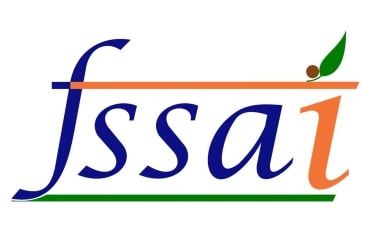 Shri Ashwini Kumar Choubey, Minister of State for Health and Family Welfare released a comprehensive report on “Large Scale Food Fortification in India - The Journey So Far and Road Ahead” at the national ‘Conclave on Nutrition Security: Partnership & Convergence’ organized by the Food Safety and Standards Authority of India (FSSAI) on the occasion of World Food Day.
Shri Choubey also launched the food fortification website at the function.
It is not enough that the food is available but the food should be nutritious as well. He emphasized on the need to raise awareness about nutrition rich food and cautioned people against food adulteration.
At the function, the Food Safety and Standards Authority of India introduced its new initiative ‘Indian Food Recovery Alliance (IFRA)’ - A coalition of food recovery partners in country to fight the issue of hunger and also prevent food loss and food wastage in India.
The food recovery partners showcased their existing models of food recovery and showcased an integrated web-based platform that is being developed.
This web based platform, released on a pilot level, allows interested donors, individuals and volunteers to register themselves to be a part of this initiative.
The donors will be able to track all the data, information and the status of the food they donate through their personal logins.
This platform will also provide guidance to citizens, food businesses and various food recovery agencies on prevention of food loss and food waste, and safe recovery of surplus food.
Through creating a network of networks from entities across sectors in India and leveraging the power of technology, FSSAI’s aim is to create an ease of communication among all the stakeholders so that everybody can take a step closer towards reducing food wastage in a uniform direction.
With respect to fortification, the next phase involves wide consumer outreach to build awareness and sensitise people to the need for fortification. Shri Ashwini Kumar Choubey, Minister of State for Health and Family Welfare released a comprehensive report on “Large Scale Food Fortification in India - The Journey So Far and Road Ahead” at the national ‘Conclave on Nutrition Security: Partnership & Convergence’ organized by the Food Safety and Standards Authority of India (FSSAI) on the occasion of World Food Day.
Shri Choubey also launched the food fortification website at the function.
It is not enough that the food is available but the food should be nutritious as well. He emphasized on the need to raise awareness about nutrition rich food and cautioned people against food adulteration.
At the function, the Food Safety and Standards Authority of India introduced its new initiative ‘Indian Food Recovery Alliance (IFRA)’ - A coalition of food recovery partners in country to fight the issue of hunger and also prevent food loss and food wastage in India.
The food recovery partners showcased their existing models of food recovery and showcased an integrated web-based platform that is being developed.
This web based platform, released on a pilot level, allows interested donors, individuals and volunteers to register themselves to be a part of this initiative.
The donors will be able to track all the data, information and the status of the food they donate through their personal logins.
This platform will also provide guidance to citizens, food businesses and various food recovery agencies on prevention of food loss and food waste, and safe recovery of surplus food.
Through creating a network of networks from entities across sectors in India and leveraging the power of technology, FSSAI’s aim is to create an ease of communication among all the stakeholders so that everybody can take a step closer towards reducing food wastage in a uniform direction.
With respect to fortification, the next phase involves wide consumer outreach to build awareness and sensitise people to the need for fortification.
|
▼ World's largest combustion research centre now at IIT Madras [10-16-17]
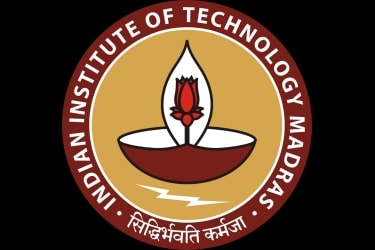 The world's largest combustion research centre which will impart a major boost to the Indian scientific community was inaugurated at the Indian Institute of Technology, Madras on Oct 15, 2017.
The National Centre for Combustion Research and Development (NCCRD) was inaugurated by NITI Aayog member V K Saraswat.
This is the world's largest combustion research centre.
With over 30 faculty members from six departments of IIT-M working on the project, this is the largest grouping of academic combustion researchers globally.
In addition, the infrastructure facilities are also the largest for any combustion research centre in an academic setting globally.
NCCRD's research interests will cover automotive, thermal power and aerospace propulsion, besides fire research and microgravity combustion to minor extent, the release said.
The NCCRD has been established at a total cost of INR 90 crore.
It will develop state-of-the-art capabilities in combustion research involving experts in the country.
The establishment of the centre will impart a major boost to the Indian scientific community and will provide an impetus to research in 'Alternative Energy and Environmental Protection' by focusing on effective utilisation of combustion as a means of thermo-chemical energy conversion.
NCCRD is supported by the state-run Science and Engineering Research Board of Department of Science and Technology (DST).
NCCRD was one of the premier centres in the country.
The intention is to make it a knowledge base in areas like gasification, combustion, propulsion and automotive sectors.
This is one of the best diagnostic centres in the country to understand combustion.
NCCRD has been set up as a nodal centre in the region and any institute and industry can work with it as it is totally IT-enabled and possess a strong simulation facility, the NITI Ayog member said.
Many industrial and R&D organisations like Mahindra, TVS, AVL, GAIL, GE, Shell, BHEL, DRDO (DRDL, GTRE, CFEES), NAL, ISRO, Forbes-Marshall, Siemens, Thermax, Cummins, FM Global, Tata Power, VTT and Valmet are working closely with NCCRD. The world's largest combustion research centre which will impart a major boost to the Indian scientific community was inaugurated at the Indian Institute of Technology, Madras on Oct 15, 2017.
The National Centre for Combustion Research and Development (NCCRD) was inaugurated by NITI Aayog member V K Saraswat.
This is the world's largest combustion research centre.
With over 30 faculty members from six departments of IIT-M working on the project, this is the largest grouping of academic combustion researchers globally.
In addition, the infrastructure facilities are also the largest for any combustion research centre in an academic setting globally.
NCCRD's research interests will cover automotive, thermal power and aerospace propulsion, besides fire research and microgravity combustion to minor extent, the release said.
The NCCRD has been established at a total cost of INR 90 crore.
It will develop state-of-the-art capabilities in combustion research involving experts in the country.
The establishment of the centre will impart a major boost to the Indian scientific community and will provide an impetus to research in 'Alternative Energy and Environmental Protection' by focusing on effective utilisation of combustion as a means of thermo-chemical energy conversion.
NCCRD is supported by the state-run Science and Engineering Research Board of Department of Science and Technology (DST).
NCCRD was one of the premier centres in the country.
The intention is to make it a knowledge base in areas like gasification, combustion, propulsion and automotive sectors.
This is one of the best diagnostic centres in the country to understand combustion.
NCCRD has been set up as a nodal centre in the region and any institute and industry can work with it as it is totally IT-enabled and possess a strong simulation facility, the NITI Ayog member said.
Many industrial and R&D organisations like Mahindra, TVS, AVL, GAIL, GE, Shell, BHEL, DRDO (DRDL, GTRE, CFEES), NAL, ISRO, Forbes-Marshall, Siemens, Thermax, Cummins, FM Global, Tata Power, VTT and Valmet are working closely with NCCRD.
|
▼ India scores a dismal 100th rank on Global Hunger Index [10-13-17]
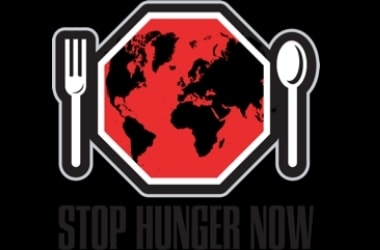 India has a “serious” hunger problem and ranks 100th out of 119 countries on the global hunger index - behind North Korea, Bangladesh and Iraq but ahead of Pakistan, according to a report.
The country’s serious hunger level is driven by high child malnutrition and underlines need for stronger commitment to the social sector, the International Food Policy Research Institute (IFPRI) indicated in its report.
India stood at 97th position in last year’s rankings.
India is ranked 100th out of 119 countries, and has the third highest score in all of Asia - only Afghanistan and Pakistan are ranked worse.
At 31.4, India’s 2017 GHI (Global Hunger Index) score is at the high end of the ‘serious’ category, and is one of the main factors pushing South Asia to the category of worst performing region on the GHI this year, followed closely by Africa South of the Sahara.
As per the report, India ranks below many of its neighbouring countries such as China (29th rank), Nepal (72), Myanmar (77), Sri Lank (84) and Bangladesh (88). It is ahead of Pakistan (106) and Afghanistan (107).
North Korea ranks 93rd while Iraq is at 78th position.
GHI: Know More India has a “serious” hunger problem and ranks 100th out of 119 countries on the global hunger index - behind North Korea, Bangladesh and Iraq but ahead of Pakistan, according to a report.
The country’s serious hunger level is driven by high child malnutrition and underlines need for stronger commitment to the social sector, the International Food Policy Research Institute (IFPRI) indicated in its report.
India stood at 97th position in last year’s rankings.
India is ranked 100th out of 119 countries, and has the third highest score in all of Asia - only Afghanistan and Pakistan are ranked worse.
At 31.4, India’s 2017 GHI (Global Hunger Index) score is at the high end of the ‘serious’ category, and is one of the main factors pushing South Asia to the category of worst performing region on the GHI this year, followed closely by Africa South of the Sahara.
As per the report, India ranks below many of its neighbouring countries such as China (29th rank), Nepal (72), Myanmar (77), Sri Lank (84) and Bangladesh (88). It is ahead of Pakistan (106) and Afghanistan (107).
North Korea ranks 93rd while Iraq is at 78th position.
GHI: Know More
- The GHI, now in its 12th year, ranks countries based on four key indicators - undernourishment, child mortality, child wasting and child stunting.
- The report ranked 119 countries in the developing world, nearly half of which have ‘extremely alarming,’ ‘alarming’ or ’serious’ hunger levels.
- India’s high ranking on the Global Hunger Index [GHI] again this year brings to the fore the disturbing reality of the country’s stubbornly high proportions of malnourished children.
- IFPRI pointed out that more than one-fifth of Indian children under five weigh too little for their height and over a third are too short for their age.
- Even with the massive scale up of national nutrition-focused programmes in India, drought and structural deficiencies have left large number of poor in India at risk of malnourishment in 2017.
- India has developed and launched an action plan on ‘undernourishment free India’ by 2022.
- As of 2015-16, more than a fifth [21%] of children in India suffer from wasting [low weight for height] - up from 20% in 2005-2006.
- Only three other countries in this year’s GHI - Djibouti, Sri Lanka and South Sudan - show child wasting above 20%.
India’s child wasting rate has not shown any substantial improvement over the past 25 years.
- However, India has made considerable improvement in reducing its child stunting rate, down 29% since 2000, but even that progress leaves India with a relatively high stunting rate of 38.4.
|
▼ Nirmal Ganga: India's first sewage treatment plant under hybrid annuity mode [10-13-17]
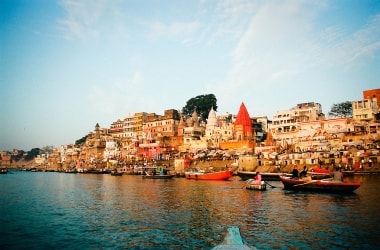 India’s first Sewage Treatment Plant under Hybrid Annuity Mode is to come up in Haridwar and Varanasi.
Work is on so Namami Gange Programme shows significant progress by December next year.
Interactive website for CSR activities and newsletter of NMCG were also launched.
Union Minister of Water Resources, River Development and Ganga Rejuvenation, Road Transport & Highways and Shipping Shri Nitin Gadkari has said that Nirmal Ganga is the biggest priority of his Ministry, and all efforts will be made to ensure that the Namami Gange Programme shows good progress by the end of next year.
The Minister further said that about 3000 MLD sewage from 97 cities on its banks are the biggest source of pollution for Ganga.
Of this, 1750 MLD sewage comes from just 10 cities. 34 projects worth INR 3581 crore had been sanctioned for Ganga cleaning between 2008-2014, while 56 projects worth Rs 9630 crore have been approved since 2014 till date.
This marked the first time ever in India that Hybrid Annuity-based PPP mode is being applied in sewerage sector.
Under this agreement the maintenance of the project will be the responsibility of the concessionaire for which there will be performance based phased manner of payment.
This would ensure continued performance of the sewage infrastructure assets created due to better accountability, ownership and optimal performance.
The 50 MLD STP in Varanasi was awarded to a consortium led by Essel Infra Projects Limited at an estimated cost of INR 153.16 crore. In Haridwar,
HNB Engineers Private Ltd. won the contract for a total sewage treatment capacity of 82 MLD (68MLD in Jagjeetpur & 14MLD in Sarai) at an estimated cost of INR 171.53 crore.
The awarded projects would ensure that untreated sewage does not flow into river Ganga, thus giving a boost to India’s flagship Namami Gange program.
The construction of these two new/ green field STPs will commence shortly.
A second set of sewage treatment projects under HAM are on the anvil. The upcoming projects which have already been sanctioned under HAM are STPs at Naini, Jhusi, and Phaphamau at Allahabad (72 MLD), STPs at Unnao, Shuklaganj, and Bithoor along with Kanpur (21.4 MLD), STPs at Digha and Kankarbagh in Bihar (150), STPs at Kolkata and Howrah (141 MLD) STPs at Farukhabad (30 MLD), STP at Bhagalpur (65 MLD).
NMCG website: Know More India’s first Sewage Treatment Plant under Hybrid Annuity Mode is to come up in Haridwar and Varanasi.
Work is on so Namami Gange Programme shows significant progress by December next year.
Interactive website for CSR activities and newsletter of NMCG were also launched.
Union Minister of Water Resources, River Development and Ganga Rejuvenation, Road Transport & Highways and Shipping Shri Nitin Gadkari has said that Nirmal Ganga is the biggest priority of his Ministry, and all efforts will be made to ensure that the Namami Gange Programme shows good progress by the end of next year.
The Minister further said that about 3000 MLD sewage from 97 cities on its banks are the biggest source of pollution for Ganga.
Of this, 1750 MLD sewage comes from just 10 cities. 34 projects worth INR 3581 crore had been sanctioned for Ganga cleaning between 2008-2014, while 56 projects worth Rs 9630 crore have been approved since 2014 till date.
This marked the first time ever in India that Hybrid Annuity-based PPP mode is being applied in sewerage sector.
Under this agreement the maintenance of the project will be the responsibility of the concessionaire for which there will be performance based phased manner of payment.
This would ensure continued performance of the sewage infrastructure assets created due to better accountability, ownership and optimal performance.
The 50 MLD STP in Varanasi was awarded to a consortium led by Essel Infra Projects Limited at an estimated cost of INR 153.16 crore. In Haridwar,
HNB Engineers Private Ltd. won the contract for a total sewage treatment capacity of 82 MLD (68MLD in Jagjeetpur & 14MLD in Sarai) at an estimated cost of INR 171.53 crore.
The awarded projects would ensure that untreated sewage does not flow into river Ganga, thus giving a boost to India’s flagship Namami Gange program.
The construction of these two new/ green field STPs will commence shortly.
A second set of sewage treatment projects under HAM are on the anvil. The upcoming projects which have already been sanctioned under HAM are STPs at Naini, Jhusi, and Phaphamau at Allahabad (72 MLD), STPs at Unnao, Shuklaganj, and Bithoor along with Kanpur (21.4 MLD), STPs at Digha and Kankarbagh in Bihar (150), STPs at Kolkata and Howrah (141 MLD) STPs at Farukhabad (30 MLD), STP at Bhagalpur (65 MLD).
NMCG website: Know More
- The Ministry also launched an interactive website on National Mission for clean Ganga (NMCG) to enable the corporates to undertake CSR activities for Ganga Rejuvenation today.
- This webpage, which will be available on NMCG website at www.nmcg.nic.in, gives the details of projects and activities which can be taken up under CSR funds, and will enable applying for the same online.
- Water Resources Ministry is exploring innovative ways for utilization of recycled sewage by power plants, sugar industries, distilleries, tanneries as also for extracting bio - CNG, methane and Carbon Dioxide.
- Also released was the inaugural issue of NMCG newsletter on the occasion.
- Through Namami Gange newsletter, NMCG aims to keep all departments/stakeholders associated with the programme well informed with the activities and achievements of the organization.
|
▼ FB MD Umang Bedi to step down in Dec 2017 [10-11-17]
 Facebook India managing director Umang Bedi has stepped down from his position, according to a statement by the social networking giant.
Sandeep Bhushan has been named the interim managing director, as per Facebook.
Bedi was appointed as the managing director in mid 2016, taking over the India business from Kirthiga Reddy who moved to the company’s headquarters in Menlo Park, in the U.S.
Prior to joining Facebook, Bedi served as the managing director of the South Asia region at Adobe.
Bedi is expected to start an entrepreneurial venture of his own
India is the second largest user base for Facebook globally, after the US. Facebook India managing director Umang Bedi has stepped down from his position, according to a statement by the social networking giant.
Sandeep Bhushan has been named the interim managing director, as per Facebook.
Bedi was appointed as the managing director in mid 2016, taking over the India business from Kirthiga Reddy who moved to the company’s headquarters in Menlo Park, in the U.S.
Prior to joining Facebook, Bedi served as the managing director of the South Asia region at Adobe.
Bedi is expected to start an entrepreneurial venture of his own
India is the second largest user base for Facebook globally, after the US.
|
▼ PMGDISHA: One of world's largest digital literacy programmes [10-10-17]
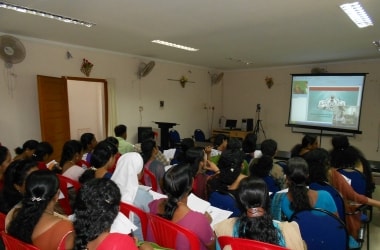 PMGDISHA is expected to make 6 crore rural households digitally literate by March 2019, making it one of the largest digital literacy programmes in the world.
PMGDISHA aims at imparting digital literacy to citizens in rural areas free of cost.
It aims to provide access to information, knowledge, education, and healthcare. It will create avenues for livelihood generation and financial inclusion through digital payments and help bridge the digital divide.
It is expected to reach around 40% rural households in country by March 2019.
Under it, people in rural area will be trained to operate a computer, tablet, smartphones, etc and how to access the Internet, government services, undertake digital payment, compose e-mails, etc.
The marginalised sections of society like SCs/STs, Minorities, BPL families, differently-abled (divyangs) all will be a part of this scheme.
PMGDISHA: Know More PMGDISHA is expected to make 6 crore rural households digitally literate by March 2019, making it one of the largest digital literacy programmes in the world.
PMGDISHA aims at imparting digital literacy to citizens in rural areas free of cost.
It aims to provide access to information, knowledge, education, and healthcare. It will create avenues for livelihood generation and financial inclusion through digital payments and help bridge the digital divide.
It is expected to reach around 40% rural households in country by March 2019.
Under it, people in rural area will be trained to operate a computer, tablet, smartphones, etc and how to access the Internet, government services, undertake digital payment, compose e-mails, etc.
The marginalised sections of society like SCs/STs, Minorities, BPL families, differently-abled (divyangs) all will be a part of this scheme.
PMGDISHA: Know More
- The Scheme is applicable only for rural areas of the country.
- Eligible Household: A household is defined as a unit comprising of Head of family, spouse, children and parents. All such households where none of the family member is digitally literate will be considered as eligible household under the Scheme.
- Entry criteria: The beneficiary should be Digitally Illiterate; Only one person per eligible household would be considered for training; Age Group: 14-60 years.
- Priority would be given to non-smartphone users, Antyodaya households, college drop-outs, Participants of the adult literacy mission: Digitally illiterate school students from class 9th to 12th, provided facility of Computer/ICT Training is not available in their schools.
- Preference would be given to SC, ST, BPL, women, differently-abled persons and minorities.
- The identification of the beneficiaries would be carried out by CSC-SPV in active collaboration with DeGS, Gram Panchayats, and Block Development Officers. The list of such beneficiaries would be made available on the scheme portal.
- The implementation of the Scheme would be carried out under the overall supervision of Ministry of Electronics and IT in active collaboration with States/UTs through their designated State Implementing Agencies, District e-Governance Society (DeGS), etc.
|
▼ Mukesh Ambani : Wealthiest man in India for 10th straight year [10-6-17]
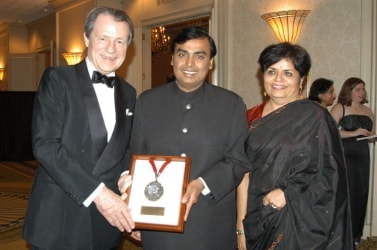 Reliance Industries chief Mukesh Ambani on Oct 5, 2017 emerged as India’s wealthiest for the 10th straight year as his net worth swelled to $38 billion (nearly 2.5 lakh crore) while the wealth of 100 richest rose by 26% despite economic hiccups.
Wipro’s Azim Premji was the distant second with a net worth of $19 billion, moving up two places from last year.
Sun Pharma’s Dilip Shanghvi slipped from his earlier second place to the ninth now ($12.1 billion) on Forbes magazine’s annual ‘India Rich List 2017.’
Among Indian billionaires, none gained more than oil-and-gas tycoon Mukesh Ambani, who cemented his decade-long hold on the top slot by adding a staggering $15.3 billion (67%) to his last year’s wealth to become one of Asia’s top five richest.
Anil Ambani, Mr. Mukesh’s younger brother, was ranked much lower at 45th place with $3.15 billion. He was ranked 32nd in 2016 ($3.4 billion) and 29th a year before that.
Patanjali Ayurved’s Acharya Balkrishna, known as a close associate of yoga guru Ramdev, made a big jump from 48th place last year to 19th now with a net worth of $6.55 billion (about 43,000 crore).
India’s turbo-charged economy sputtered in the quarter ended in June as it grew at a three-year low of 5.7%, due to the aftershocks of last November’s demonetisation and uncertainties over the rollout of a nation-wide Goods and Services Tax.
Despite this, the stock market scaled new heights and boosted the fortunes of the nation’s 100 richest.
In the case of Mr. Ambani, improved refining margins and his telecom unit Reliance Jio’s thundering success in notching up 130 million subscribers since its 2016 launch pushed up shares of Reliance Industries.
The Hinduja brothers are at the third position with $18.4 billion while Lakshmi Mittal is now ranked fourth ($16.5 billion) and Pallonji Mistry fifth ($16 billion).
The ranking lists family fortunes, including those shared among extended families such as the Godrej and Bajaj families.
Public fortunes were calculated based on stock prices and exchange rates as of September 15. Private companies were valued based on similar companies that are publicly traded.
More than four-fifths of those who kept their spot on the list from last year saw their wealth rise, with 27 listees adding $1 billion or more to their net worth.
The richest newcomer is cookies-and-airline tycoon Nusli Wadia at the 25th place with a net worth of $5.6 billion.
Forbes India Rich List: Know More Reliance Industries chief Mukesh Ambani on Oct 5, 2017 emerged as India’s wealthiest for the 10th straight year as his net worth swelled to $38 billion (nearly 2.5 lakh crore) while the wealth of 100 richest rose by 26% despite economic hiccups.
Wipro’s Azim Premji was the distant second with a net worth of $19 billion, moving up two places from last year.
Sun Pharma’s Dilip Shanghvi slipped from his earlier second place to the ninth now ($12.1 billion) on Forbes magazine’s annual ‘India Rich List 2017.’
Among Indian billionaires, none gained more than oil-and-gas tycoon Mukesh Ambani, who cemented his decade-long hold on the top slot by adding a staggering $15.3 billion (67%) to his last year’s wealth to become one of Asia’s top five richest.
Anil Ambani, Mr. Mukesh’s younger brother, was ranked much lower at 45th place with $3.15 billion. He was ranked 32nd in 2016 ($3.4 billion) and 29th a year before that.
Patanjali Ayurved’s Acharya Balkrishna, known as a close associate of yoga guru Ramdev, made a big jump from 48th place last year to 19th now with a net worth of $6.55 billion (about 43,000 crore).
India’s turbo-charged economy sputtered in the quarter ended in June as it grew at a three-year low of 5.7%, due to the aftershocks of last November’s demonetisation and uncertainties over the rollout of a nation-wide Goods and Services Tax.
Despite this, the stock market scaled new heights and boosted the fortunes of the nation’s 100 richest.
In the case of Mr. Ambani, improved refining margins and his telecom unit Reliance Jio’s thundering success in notching up 130 million subscribers since its 2016 launch pushed up shares of Reliance Industries.
The Hinduja brothers are at the third position with $18.4 billion while Lakshmi Mittal is now ranked fourth ($16.5 billion) and Pallonji Mistry fifth ($16 billion).
The ranking lists family fortunes, including those shared among extended families such as the Godrej and Bajaj families.
Public fortunes were calculated based on stock prices and exchange rates as of September 15. Private companies were valued based on similar companies that are publicly traded.
More than four-fifths of those who kept their spot on the list from last year saw their wealth rise, with 27 listees adding $1 billion or more to their net worth.
The richest newcomer is cookies-and-airline tycoon Nusli Wadia at the 25th place with a net worth of $5.6 billion.
Forbes India Rich List: Know More
- Among the five other new entrants to the list are Dinesh Nandwana (88, $1.72 billion) of e-governance services firm Vakrangee; Vijay Shekhar Sharma (99, $1.47 billion) of fast-rising mobile wallet Paytm and Rana Kapoor (100, $1.46 billion) of Yes Bank.
- Veteran investor Radhakishan Damani, boosted by the listing of his supermarket chain D-Mart in March, returned to the list at 12th place with a net worth of $9.3 billion.
- Other returnees are Future Group’s Kishore Biyani (55th, $2.75 billion) and siblings Murli Dhar and Bimal Gyanchandani (75, $1.96 billion).
- However, a dozen have turned poorer than a year ago, with half of them from the pharmaceutical sector, which has been plagued by challenges.
- Pharmaceutical magnate Dilip Shanghvi is the biggest dollar loser on the list as his net worth fell by $4.8 billion, ending his three-year run as India’s second-richest.
- The Gupta family (40, $3.45 billion), heirs of patriarch Desh Bandhu Gupta, who died in June, saw their fortune shrink as shares of their generics maker Lupin declined.
- Brothers Shashi and Ravi Ruia suffered a drop as their Essar Steel faced bankruptcy proceedings under India’s stricter new law, Forbes said.
- The 100 wealthiest on this year’s list are all billionaires. The minimum amount required to make the list was $1.46 billion, up from $1.25 billion last year.
|
▼ Social media hate speeches banned in Germany [10-5-17]
 Germany's law combating hate speech on social media is now live.
It's the country's attempt to get social networks to remove offensive posts within 24 hours (or seven days, if the content is difficult to evaluate).
Those that fail to comply may be fined up to 50 million euros ($58 million) by the country's Ministry of Justice, though they'll get a grace period until January 1st, 2018, to prepare.
Germany proposed the legislation back in April, which was later named the Network Enforcement Act (Netzwerkdurchsetzungsgesetz in German, abbreviated as NetzDG).
Facebook fired back, claiming the bill would simply encourage sites to simply take down content to avoid the fines.
It should be noted that Germany seriously cracks down on hate speech, and police raided 36 homes earlier this year while investigating users who had posted such.
Those who are charged with inciting racial hatred can be imprison for up to five years.
The NetzDG law applies to any site that meets the legal definition of social network regardless of size, according to Spiegel Online.
Germany isn't alone in threatening internet titans with serious penalties if they don't swiftly take down hate speech: The EU just approved a law enabling it to threaten legal action against social media companies that don't take down such content. Germany's law combating hate speech on social media is now live.
It's the country's attempt to get social networks to remove offensive posts within 24 hours (or seven days, if the content is difficult to evaluate).
Those that fail to comply may be fined up to 50 million euros ($58 million) by the country's Ministry of Justice, though they'll get a grace period until January 1st, 2018, to prepare.
Germany proposed the legislation back in April, which was later named the Network Enforcement Act (Netzwerkdurchsetzungsgesetz in German, abbreviated as NetzDG).
Facebook fired back, claiming the bill would simply encourage sites to simply take down content to avoid the fines.
It should be noted that Germany seriously cracks down on hate speech, and police raided 36 homes earlier this year while investigating users who had posted such.
Those who are charged with inciting racial hatred can be imprison for up to five years.
The NetzDG law applies to any site that meets the legal definition of social network regardless of size, according to Spiegel Online.
Germany isn't alone in threatening internet titans with serious penalties if they don't swiftly take down hate speech: The EU just approved a law enabling it to threaten legal action against social media companies that don't take down such content.
|
▼ China builds world's tallest pylon in east Zhejiang province [10-5-17]
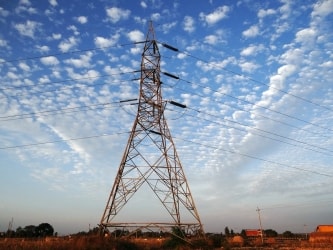 China builds world's tallest pylon in east Zhejiang province
China's Zhejiang Electric Power Company said the construction began on a giant power supply pylon, believed to be the world's tallest, in the country's east Zhejiang Province.
The 380-metre tall pylon will be four times the height of London's iconic Big Ben.
The pylon will carry power cables between Zhoushan's Jintang and Cezi islands, a distance of 2,656 metres, the power company's Zhoushan branch said in the announcement.
It is set to break the world record for the tallest power pylon currently held by China's Damaoshan pylon which stands at 370 meters, also in Zhoushan.
The pylon is a part of a new ultra-high voltage power line project between cities of Zhoushan and Ningbo.
The project is expected to completed by the end of 2018, and will be put into use in 2019, Xinhua said. China builds world's tallest pylon in east Zhejiang province
China's Zhejiang Electric Power Company said the construction began on a giant power supply pylon, believed to be the world's tallest, in the country's east Zhejiang Province.
The 380-metre tall pylon will be four times the height of London's iconic Big Ben.
The pylon will carry power cables between Zhoushan's Jintang and Cezi islands, a distance of 2,656 metres, the power company's Zhoushan branch said in the announcement.
It is set to break the world record for the tallest power pylon currently held by China's Damaoshan pylon which stands at 370 meters, also in Zhoushan.
The pylon is a part of a new ultra-high voltage power line project between cities of Zhoushan and Ningbo.
The project is expected to completed by the end of 2018, and will be put into use in 2019, Xinhua said.
|
▼ Famous sculptor Ram Sutar creates Father of Nation's statue in Rajghat [10-4-17]
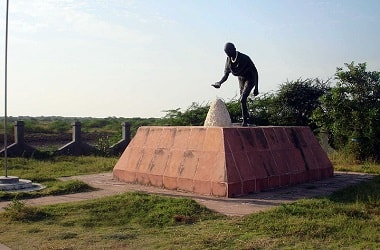 Rajghat, the Samadhi of the Father of the Nation in the national capital , has for the first time acquired a new feature that could appeal to the large number of visitors.
Vice-President of India Shri M.Venkaiah Naidu unveiled a 1.80 metre tall bronze statue of Mahatma Gandhi on the occasion of the 148 Birth Anniversary of the champion of country’s independence.
The statue, sculpted by the renowned Shri Ram Sutar is installed in the Parking Area of Rajghat Samadhi Complex at a cost of INR 8.73 lakhs.
It is mounted on a two feet high pedestal clad with granite.
The famous message of Gandhi ji “Be the Change You Wish to See” is inscribed on the front side of the pedestal. Installation of the Statue is a part of a large number of improvement works at Rajghat undertaken during the last three years.
Over 10,000 people visiting Rajghat daily and foreign dignitaries pay homage to the Father of the Nation at the simple black stone platform marking the place where Gandhi ji was cremated.
Shri Venkaiah Naidu also inaugurated an Interpretation Centre in the Parking Area of the complex.
The INR 59 lakhs facility enables interactive learning about the life and works of the Mahatma through Digital Display using LED screens.
Visitors can watch films, life events, listen to speeches of Gandhiji besides participating in quiz, using ear phones for interaction without disturbance.
The Samadhi Complex also got a new administrative block that is equipped with Visitors Room, Publication Unit, Staff Room, Drinking Water facility. This has been built at a cost of about Rs.75 lakhs. Rajghat, the Samadhi of the Father of the Nation in the national capital , has for the first time acquired a new feature that could appeal to the large number of visitors.
Vice-President of India Shri M.Venkaiah Naidu unveiled a 1.80 metre tall bronze statue of Mahatma Gandhi on the occasion of the 148 Birth Anniversary of the champion of country’s independence.
The statue, sculpted by the renowned Shri Ram Sutar is installed in the Parking Area of Rajghat Samadhi Complex at a cost of INR 8.73 lakhs.
It is mounted on a two feet high pedestal clad with granite.
The famous message of Gandhi ji “Be the Change You Wish to See” is inscribed on the front side of the pedestal. Installation of the Statue is a part of a large number of improvement works at Rajghat undertaken during the last three years.
Over 10,000 people visiting Rajghat daily and foreign dignitaries pay homage to the Father of the Nation at the simple black stone platform marking the place where Gandhi ji was cremated.
Shri Venkaiah Naidu also inaugurated an Interpretation Centre in the Parking Area of the complex.
The INR 59 lakhs facility enables interactive learning about the life and works of the Mahatma through Digital Display using LED screens.
Visitors can watch films, life events, listen to speeches of Gandhiji besides participating in quiz, using ear phones for interaction without disturbance.
The Samadhi Complex also got a new administrative block that is equipped with Visitors Room, Publication Unit, Staff Room, Drinking Water facility. This has been built at a cost of about Rs.75 lakhs.
|
▼ Scientists transfer embryo from ongole cows to other breeds. [10-4-17]
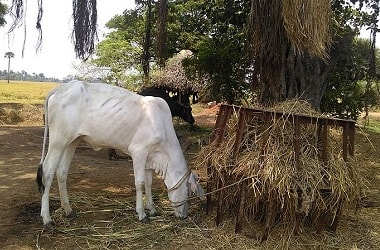 The Ongole breed cow is known for high milk yielding capacities and adaptability in tough conditions.
An innovative cattle breeding technology replicating the In Vitro Fertilisation (IVF) procedure developed by the veterinary scientists at the Livestock Research Station, promising a revolution in cattle breeding.
After successful clinical trials in which the surrogate embryo of the higher genetic Ongole cow is transferred to lower genetic cows under the “Indigenous Bovine Embryo Transfer Mission” at Sri Venkateswara Veterinary University, Livestock Research Station, Lam, Guntur, scientists are now taking the technology to the doorstep of farmers.
The programme has been taken up under the National Mission on Bovine Productivity (NMBP) under the Department of Animal Husbandry Dairying Fisheries, Ministry of Agriculture, and Andhra Pradesh Livestock Development Agency.
The big advantage that a dairy farmer has is there is an increase of offspring by 5-6 times through the bovine embryo transfer technology.
The quality of offspring is also better as the embryo transfer is in between higher genetic animals to lower genetic animals.
Tadikonda MLA and board member of the university Tenali Sravan Kumar launched the programme at the Live stock Research Station, Lam, in the presence of senior officials of the department.
Under the National Mission on Bovine Productivity, it was proposed to carry out 1,000 embryo transfers during October 2-10, 2017, across the country and the Embryo Biotechnology laboratory at Livestock Research Station, Lam, has been identified to carry out this activity in Ongole cattle. The Ongole breed cow is known for high milk yielding capacities and adaptability in tough conditions.
An innovative cattle breeding technology replicating the In Vitro Fertilisation (IVF) procedure developed by the veterinary scientists at the Livestock Research Station, promising a revolution in cattle breeding.
After successful clinical trials in which the surrogate embryo of the higher genetic Ongole cow is transferred to lower genetic cows under the “Indigenous Bovine Embryo Transfer Mission” at Sri Venkateswara Veterinary University, Livestock Research Station, Lam, Guntur, scientists are now taking the technology to the doorstep of farmers.
The programme has been taken up under the National Mission on Bovine Productivity (NMBP) under the Department of Animal Husbandry Dairying Fisheries, Ministry of Agriculture, and Andhra Pradesh Livestock Development Agency.
The big advantage that a dairy farmer has is there is an increase of offspring by 5-6 times through the bovine embryo transfer technology.
The quality of offspring is also better as the embryo transfer is in between higher genetic animals to lower genetic animals.
Tadikonda MLA and board member of the university Tenali Sravan Kumar launched the programme at the Live stock Research Station, Lam, in the presence of senior officials of the department.
Under the National Mission on Bovine Productivity, it was proposed to carry out 1,000 embryo transfers during October 2-10, 2017, across the country and the Embryo Biotechnology laboratory at Livestock Research Station, Lam, has been identified to carry out this activity in Ongole cattle.
|
▼ BSNL, VNL ink agreement for Relief 123 agreement [10-3-17]
 Domestic telecom equipment provider Vihaan Networks Limited (VNL) on 28th Sept 2017 signed a Memorandum of Understanding (MoU) with Bharat Sanchar Nigam Limited (BSNL) to launch "Relief 123" service to provide disaster management in India.
The "Relief 123" service is an integrated disaster response solution for first responders and public safety agencies.
The solution is designed and manufactured by VNL and the backhaul connectivity will be provided by BSNL.
Given that our country is prone to natural disasters, the availability and quick deployment of comprehensive communications solutions will help disaster management agencies mount faster and more reliable search and rescue operations.
The comprehensive communication solution will bring BSNL and disaster management agencies—National Disaster Management Authority (NDMA) and National Disaster Relief Force (NDRF) on one platform for better coordination.
On the very first day of the Mobile Congress, a Latin American company connected with us for the solution. The technology was tested in India and is 100 per cent successful.
The "Relief 123" is based on "ResQMobil", an integrated portable communication solution which packs in the required hardware into a portable transportable trailer-on-wheels.
The service will restore connectivity at disaster sites, help locate the affected people and integrate information across platforms for quick relief.
The model can also be scaled for Saarc countries, wherein BSNL would have roaming agreements with local mobile service operators.
Both companies have partnered in the past for the roll out of voice and data connectivity in the worst Left-wing extremism-affected areas of the country. Domestic telecom equipment provider Vihaan Networks Limited (VNL) on 28th Sept 2017 signed a Memorandum of Understanding (MoU) with Bharat Sanchar Nigam Limited (BSNL) to launch "Relief 123" service to provide disaster management in India.
The "Relief 123" service is an integrated disaster response solution for first responders and public safety agencies.
The solution is designed and manufactured by VNL and the backhaul connectivity will be provided by BSNL.
Given that our country is prone to natural disasters, the availability and quick deployment of comprehensive communications solutions will help disaster management agencies mount faster and more reliable search and rescue operations.
The comprehensive communication solution will bring BSNL and disaster management agencies—National Disaster Management Authority (NDMA) and National Disaster Relief Force (NDRF) on one platform for better coordination.
On the very first day of the Mobile Congress, a Latin American company connected with us for the solution. The technology was tested in India and is 100 per cent successful.
The "Relief 123" is based on "ResQMobil", an integrated portable communication solution which packs in the required hardware into a portable transportable trailer-on-wheels.
The service will restore connectivity at disaster sites, help locate the affected people and integrate information across platforms for quick relief.
The model can also be scaled for Saarc countries, wherein BSNL would have roaming agreements with local mobile service operators.
Both companies have partnered in the past for the roll out of voice and data connectivity in the worst Left-wing extremism-affected areas of the country.
|
▼ What is a Potemkin village? [10-3-17]
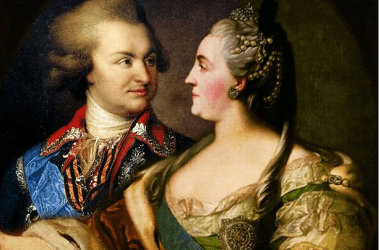 This refers to any kind of false structure built to deceive observers into believing that a situation is much better than it actually is.
The term has its origin in the fake villages that were constructed by Russian military leader Grigory Potyomkin in the 18th century.
In order to woo Empress Catherine the Great, Potyomkin arranged a show of prosperity during her inspection trip to Crimea in 1787 after the acquisition of new land in Crimea and other regions following Russia’s victory over the Ottoman empire.
He made the situation on the ground look better than it was by erecting replicas of pretty towns and fancy fireworks. This refers to any kind of false structure built to deceive observers into believing that a situation is much better than it actually is.
The term has its origin in the fake villages that were constructed by Russian military leader Grigory Potyomkin in the 18th century.
In order to woo Empress Catherine the Great, Potyomkin arranged a show of prosperity during her inspection trip to Crimea in 1787 after the acquisition of new land in Crimea and other regions following Russia’s victory over the Ottoman empire.
He made the situation on the ground look better than it was by erecting replicas of pretty towns and fancy fireworks.
|